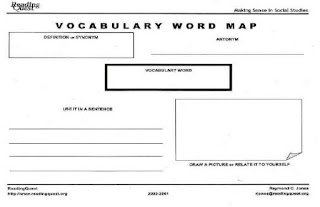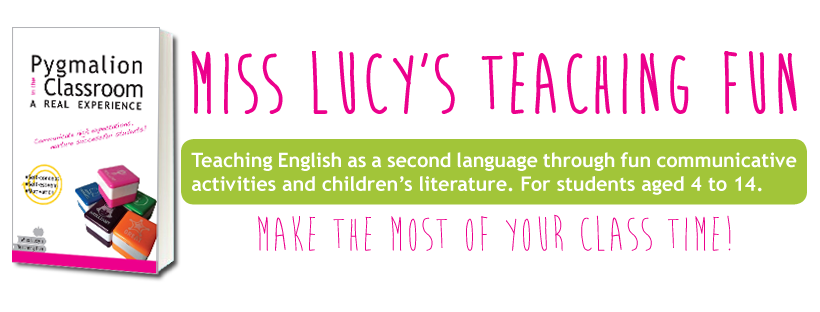Today I would like to talk about a somewhat controversial matter: the subject of Natural Sciences in English.
I know that here in Madrid, more than 10 years after the implantation of bilingualism in the Primary school, many parents have left their enthusiasm aside to replace it with the fear that their children will not learn almost anything about the subject in both English and Spanish.
In many schools the greatest weight of the evaluation to pass the subject is taken by the written tests: it turns out that in first and second grade these controls are quite simple: mainly children have to connect a word to a picture, circle parts of a drawing, paint, complete sentences with the given words and little more. The problems begin in third grade, when these controls become quite complex because in addition to labeling drawings or body parts, which implies writing without spelling errors in English, students are asked to fill in gaps in a text, for example, or to read a definition and write the word described, correct statements or even explain with their own words some facts: tasks that not only require spelling correction but also require reading comprehension and the ability to express ideas and concepts using specific scientific vocabulary and correct grammatical constructions (writing skills).
 It seems to me that we should keep in mind that at the base of the bilingualism project is the concept of Content and Language Integrated Learning – CLIL– whose objective is for children to learn a language through the study of subjects such as Natural and Social Sciences, Music, Plastics, Physical Education, etc.
It seems to me that we should keep in mind that at the base of the bilingualism project is the concept of Content and Language Integrated Learning – CLIL– whose objective is for children to learn a language through the study of subjects such as Natural and Social Sciences, Music, Plastics, Physical Education, etc.
However, I have the impression that, despite the CLIL premises, it is still not very clear how to encourage this type of learning. Regrettably, the vocabulary lists copied a few boring times only serve, and not always, to achieve a certain orthographic correction, when the objectives of the subject are to learn the Natural Science in English: children should be able to express and present scientific concepts and facts in more or less correct English, depending on the stage in which they are in.
I know that here in Madrid, more than 10 years after the implantation of bilingualism in the Primary school, many parents have left their enthusiasm aside to replace it with the fear that their children will not learn almost anything about the subject in both English and Spanish.
In many schools the greatest weight of the evaluation to pass the subject is taken by the written tests: it turns out that in first and second grade these controls are quite simple: mainly children have to connect a word to a picture, circle parts of a drawing, paint, complete sentences with the given words and little more. The problems begin in third grade, when these controls become quite complex because in addition to labeling drawings or body parts, which implies writing without spelling errors in English, students are asked to fill in gaps in a text, for example, or to read a definition and write the word described, correct statements or even explain with their own words some facts: tasks that not only require spelling correction but also require reading comprehension and the ability to express ideas and concepts using specific scientific vocabulary and correct grammatical constructions (writing skills).
 It seems to me that we should keep in mind that at the base of the bilingualism project is the concept of Content and Language Integrated Learning – CLIL– whose objective is for children to learn a language through the study of subjects such as Natural and Social Sciences, Music, Plastics, Physical Education, etc.
It seems to me that we should keep in mind that at the base of the bilingualism project is the concept of Content and Language Integrated Learning – CLIL– whose objective is for children to learn a language through the study of subjects such as Natural and Social Sciences, Music, Plastics, Physical Education, etc.However, I have the impression that, despite the CLIL premises, it is still not very clear how to encourage this type of learning. Regrettably, the vocabulary lists copied a few boring times only serve, and not always, to achieve a certain orthographic correction, when the objectives of the subject are to learn the Natural Science in English: children should be able to express and present scientific concepts and facts in more or less correct English, depending on the stage in which they are in.

How can we help our students?
My experience and the cognitive and constructivist theories of learning have led me to this reflection: we should always bear in mind that the main objective of the bilingual project is to learn the language and this is learned using 'complete sentences' made up of a subject, a verb and a direct or an indirect object. In practical terms, it means that children, in class, at home, when doing written exercises, during presentations, etc., should always answer with a complete sentence using the specific vocabulary and the correct grammatical structure (the affirmative, negative and interrogative forms of the present simple and the present continuous of any verb, together with 'can', 'have got' and not much else).
 This may sound banal, but if we look at the dynamics of a class we can see that when we launch a question in most cases the competition to be the first to answer prevails, and that means not having time to think about an entire sentence: our students tend to answer with only one word. On the other hand, the exercises we can find in the book don't help much in that sense either, since most of them are about filling in gaps or answering questions by choosing between already formulated answers. Could you guess how much time and attention a child spends on these types of tasks after 8 hours, or more, spent at school?
This may sound banal, but if we look at the dynamics of a class we can see that when we launch a question in most cases the competition to be the first to answer prevails, and that means not having time to think about an entire sentence: our students tend to answer with only one word. On the other hand, the exercises we can find in the book don't help much in that sense either, since most of them are about filling in gaps or answering questions by choosing between already formulated answers. Could you guess how much time and attention a child spends on these types of tasks after 8 hours, or more, spent at school?To sum up, using complete sentences will cost our students more effort because it requires them to connect the subject of Natural Sciences to that of English, to leave the compartmental units of their books in order to create a more general and flexible narrative; but with time and practice important improvements will be noticed, because there is a greater and deeper understanding of the subject, which will allow them to follow their teachers with less difficulty and assimilate more concepts, unleashing in this way that virtuous circle which improves at the same time the results, self-esteem and control of the language.






























